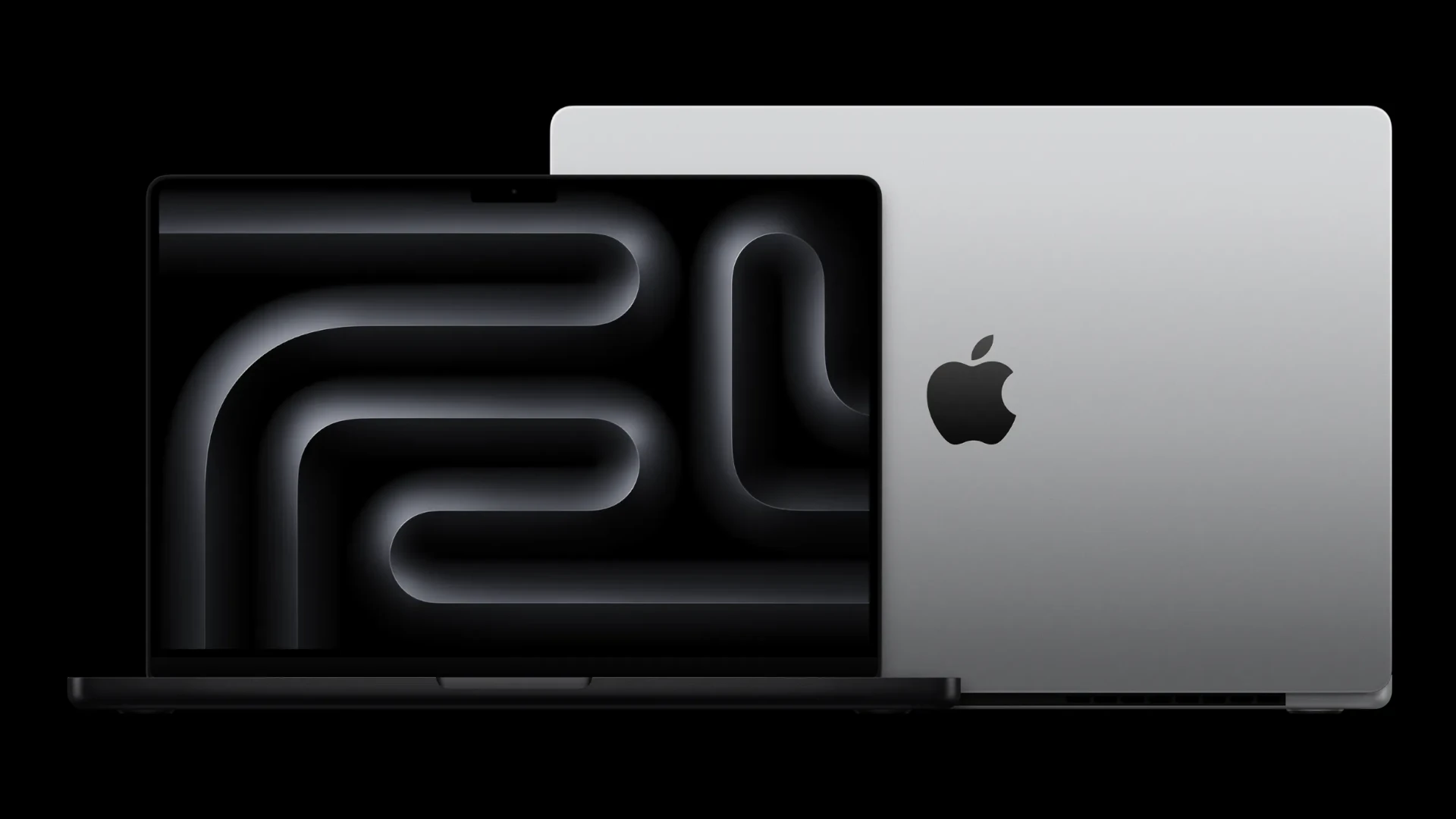Apple’s next-generation MacBook Pro lineup is shaping up to be a major release in the second half of 2025, thanks to the debut of the M5 chip — its most powerful and efficient processor to date. Positioned as the logical successor to the M4, the M5 marks another leap in Apple Silicon’s aggressive roadmap, targeting professionals who need cutting-edge performance, AI processing, and battery efficiency without compromise.
Release Timeline: October 2025 Targeted
Apple is expected to unveil its updated 14-inch and 16-inch MacBook Pro models with the M5 chip around October 2025, staying in line with its traditional fall product cycle. Supply chain reports indicate mass production of the M5 will begin in mid-to-late 2025, which supports an October or early November launch window.
This release will likely follow the mid-year M4-powered iPad Pro refresh, setting the stage for Apple to fully showcase the power of its next-generation chip in a MacBook form factor.
M5 Chip Architecture: Power Meets Efficiency
The Apple M5 will be manufactured using TSMC’s 3nm N3P process — a refinement of the process used for the M4. This enables higher transistor density and improved energy efficiency. Based on current projections and leaks, the M5 will:
- Offer 15–25% better CPU and GPU performance compared to the M4
- Feature a next-gen Neural Engine capable of handling over 30 trillion operations per second, further advancing Apple’s on-device AI capabilities
- Improve battery life by an estimated 10–15%, thanks to its power-efficient architecture
Expect a mix of performance and efficiency cores (likely a 10-core CPU with 6 performance and 4 efficiency cores), alongside upgraded GPU options (potentially up to 40 GPU cores in higher-end configurations).
Apple is also reportedly optimizing the M5 for visionOS and AI workflows, making it ideal for developers and creatives pushing into 3D modeling, AR, and machine learning applications.
Design & Features: Familiar Outside, Faster Inside
While the M5 MacBook Pro won’t feature a dramatic redesign, Apple is expected to make several important under-the-hood upgrades:
- Wi-Fi 7 support: Enabling speeds of up to 40Gbps for future-proof wireless networking.
- Advanced thermal design: Revised internal cooling to accommodate the higher-performance M5 chip without compromising on noise levels.
- Improved camera hardware: Apple may introduce a more compact camera module (CCM) to improve video quality while preserving chassis space.
- Enhanced storage speeds: Leveraging next-gen NAND and SSD controllers for faster read/write performance.
Design-wise, the chassis is expected to remain consistent with the 2021 redesign, meaning users still get the mini-LED display, HDMI, MagSafe 3, SD card slot, and three Thunderbolt 4 ports.
However, OLED displays and slimmer designs are reportedly being saved for the 2026 generation.
Should You Upgrade to the M5 MacBook Pro?
If you’re still using an Intel-based MacBook or even an M1 model, the M5 MacBook Pro will feel like a massive leap — not just in performance, but also in efficiency, thermals, and battery life. For creators working with 4K/8K video, AI workflows, or app development, the M5 will likely be a worthy upgrade.
However, if you already own an M3 Pro or M4 MacBook Pro, the improvements may be more incremental unless your workflow demands cutting-edge AI or multithreaded compute.
For users who prioritize design changes, the real transformation — including OLED displays and redesigned enclosures — is expected in 2026. Waiting another year might be the smarter move if aesthetics and future display tech are key to your decision.
Either way, the M5 MacBook Pro looks poised to push Apple Silicon even further into the realm of high-end computing — and redefine what’s possible in a laptop.
Key Takeaways
- The M5 MacBook Pro will launch in late 2025 with improved performance from TSMC’s 3nm chip technology.
- Apple plans a bigger redesign with the M6 chip in 2026, making the M5 a stepping stone to future innovations.
- The late 2025 release fits Apple’s pattern of regular updates while giving pros access to cutting-edge technology before the major 2026 overhaul.
Anticipated Features of the Next-Gen MacBook Pro
Apple is gearing up to launch a new MacBook Pro featuring the highly anticipated M5 chip in late 2025. Tech enthusiasts are already buzzing about this upcoming release, which promises significant performance improvements over current models. The M5 MacBook Pro is expected to deliver faster processing speeds using TSMC’s advanced 3nm chip technology, making it a compelling upgrade for professionals and power users alike.
While Apple plans to release the M5 MacBook Pro toward the end of 2025, reports suggest an even more substantial overhaul is coming in 2026 with the M6 chip. The current timeline shows Apple is still on schedule for an October or November 2025 release window. This strategic timing gives Apple a chance to refine the technology before releasing what many are calling the most epic laptop revolution of the decade.
The upcoming MacBook Pro with the M5 chip promises significant upgrades in processing power, display quality, AI capabilities, and battery performance. These improvements aim to keep Apple at the forefront of laptop innovation.
M5 Chip Architecture and Performance
The M5 MacBook Pro is expected to feature Apple’s most advanced silicon yet. Built on TSMC’s improved fabrication process, the M5 chip will likely offer substantial performance gains over the M3 and M4 generations.
Industry analysts predict up to 30% faster CPU performance and 40% improved graphics capabilities. These enhancements will benefit professionals working with demanding applications like video editing and 3D rendering.
The new chip architecture may include:
- Increased core count (up to 12-14 CPU cores)
- Enhanced Neural Engine for AI tasks
- Larger on-chip cache for faster data access
- Improved ray tracing for gaming and professional graphics
Apple’s focus on performance-per-watt efficiency remains strong. The M5 chip should deliver these improvements while maintaining or even reducing power consumption compared to previous models.
OLED Display Technology and Visual Upgrades
Apple appears to be saving OLED screen technology for future MacBook Pro models, possibly for 2026. However, the 2025 M5 MacBook Pro will still feature significant display improvements.
Expected display enhancements include:
- Higher brightness levels for better outdoor visibility
- Improved color accuracy for creative professionals
- Reduced bezels for a more immersive viewing experience
- Potential ProMotion technology with variable refresh rates up to 120Hz
These upgrades will benefit content creators, photographers, and video editors who need accurate color reproduction. Gamers will also appreciate the smoother visual experience with potential high refresh rate support.
The display may maintain the mini-LED technology found in current models, which offers excellent contrast ratios and HDR performance.
AI and Apple Intelligence Integration
The M5 MacBook Pro will likely showcase Apple’s most advanced AI capabilities to date. Apple Intelligence will be deeply integrated into macOS, providing smarter and more contextual interactions.
Key AI features may include:
- Enhanced voice recognition and natural language processing
- Automated photo and video editing suggestions
- Real-time language translation capabilities
- Predictive app suggestions based on user habits
- Improved battery management through usage pattern analysis
The M5’s Neural Engine will be optimized specifically for these tasks. Apple has designed the chip to handle complex AI workloads locally, maintaining privacy while delivering responsive performance.
Creative professionals will benefit from AI-assisted tools that streamline workflows. Productivity enhancements through contextual suggestions will help business users work more efficiently.
Enhanced Battery Life and Connectivity
Despite increased performance, the M5 MacBook Pro is expected to deliver improved battery life. Apple’s efficiency-focused design may enable up to 20 hours of web browsing or video playback on a single charge.
Connectivity options will also see significant upgrades. The M5 MacBook Pro may feature Thunderbolt 5 technology, offering:
- Data transfer speeds up to 80 Gbps
- Support for multiple high-resolution external displays
- Enhanced power delivery capabilities
- Backward compatibility with existing Thunderbolt devices
Wireless connectivity will improve with Wi-Fi 7 support, providing faster and more reliable internet connections. Cellular connectivity options might be introduced for professionals who need internet access on the go.
The charging system could see upgrades too, with faster charging capabilities to minimize downtime for professional users.
Market Impact and Competitive Landscape
Apple’s upcoming M5 MacBook Pro is positioned to reshape the laptop market with significant performance advantages over competitors and previous models. The new chip architecture stands to influence both consumer choices and industry standards.
Comparison with M4 Chip and Previous MacBooks
The M5 chip represents a major leap from the M4, which itself was a substantial improvement over the M3 line. Based on industry predictions, the M5 will likely feature higher core counts and upgraded graphics processors. These enhancements could deliver up to 30-40% better performance in demanding tasks.
MacBook Pro models with M5 chips will make the performance gap between Apple Silicon and Intel Macs even more pronounced. The first-generation M1 chip already outperformed many Intel processors, and the M5 continues this upward trajectory.
Battery efficiency also remains a key advantage. While the M4 MacBook Air offered roughly 18 hours of battery life, the M5 MacBook Pro could push this boundary further despite its more powerful components.
The price-to-performance ratio will be crucial for market adoption, especially as consumers weigh upgrading from M3 or M4 devices.
Integration with Apple Ecosystem and Competing Devices
The M5 MacBook Pro will strengthen Apple’s ecosystem advantage through enhanced cross-device functionality. Features like Universal Control and Handoff between Macs, iPads, and iPhones will become smoother and more capable.
Samsung and other Windows laptop makers using Qualcomm’s Arm-based chips are racing to match Apple’s performance but still trail in integration benefits. The upcoming M5 MacBook Pro will likely shock the laptop world with its combined performance and ecosystem advantages.
Apple Vision Pro integration could be a standout feature, with the M5’s neural engine potentially offering specialized capabilities for mixed reality applications.
iOS 18 and macOS features will likely include AI enhancements specifically optimized for the M5 chip’s neural capabilities.
External GPU (eGPU) support remains limited compared to Windows laptops with NVIDIA GeForce RTX or AMD Radeon graphics options.
Influence of Industry Partners and Analysts
Respected analyst Ming-Chi Kuo has suggested the M5 chip will drive MacBook sales through 2026, when an M6 ‘overhaul’ is expected.
Apple CEO Tim Cook has consistently highlighted Apple Silicon as central to the company’s hardware strategy. The M5 represents the fulfillment of this vision.
Software developers, including major players like the creators of Fortnite, are increasingly optimizing applications for Apple Silicon, seeing the platform as critical for future growth.
Professional applications in video editing, 3D rendering, and audio production will see significant improvements through M5 optimizations.
The October to November 2025 launch window gives Apple strategic timing for holiday sales and positions them well against competing releases.
Frequently Asked Questions
The upcoming M5 MacBook Pro brings several key improvements to Apple’s laptop lineup, with changes to performance, battery life, and release timing that many potential buyers are curious about.
What improvements does the M5 chip offer over its predecessors?
The M5 chip is expected to bring significant performance gains over the M3 and M4 processors. Reports suggest it will use more advanced manufacturing technology, likely TSMC’s 3nm process.
This new chip should offer faster CPU cores and more powerful graphics capabilities. Users can expect better handling of AI tasks and improved multi-threading performance.
The neural engine in the M5 will also likely be upgraded to better support Apple Intelligence features.
What is the expected release date for the MacBook Pro featuring the M5 chip?
Apple is targeting an October to November 2025 launch window for the M5-powered MacBook Pro models.
This timing aligns with Apple’s usual fall refresh cycle for MacBook Pro devices. Recent reports from Bloomberg’s Mark Gurman confirm this timeline remains on track.
Apple seems to be maintaining its schedule even as it develops future M6 and M7 chips.
How will the inclusion of the M5 chip enhance MacBook Pro’s performance?
The M5 chip will likely boost raw processing speed by 15-20% compared to current models. Graphics performance may see even larger improvements, especially for 3D rendering and video editing.
Professional users should notice faster export times for video projects and smoother performance in resource-intensive applications.
The upgraded neural engine will enhance machine learning tasks, making features like photo processing and voice recognition more responsive.
What are the anticipated impacts of the M5 chip on battery life and efficiency?
The M5 chip should continue Apple’s focus on power efficiency, potentially extending battery life by 1-2 hours compared to M3 models under similar workloads.
The improved chip architecture will likely allow for better power management during both intensive tasks and idle periods.
Users can expect cooler operation with less fan noise, as the chip’s efficiency reduces heat output during demanding tasks.
In terms of compatibility, what operating system requirements will the M5-powered MacBook Pro have?
The M5 MacBook Pro will ship with the latest macOS version available in late 2025, likely macOS 17.
All software optimized for Apple Silicon will run natively, while Intel-based applications will continue working through Rosetta translation technology.
The new models will fully support Apple Intelligence features that were introduced with earlier versions of macOS.
Are there any significant design changes anticipated for the MacBook Pro with the introduction of the M5 chip?
The M5 MacBook Pro is expected to maintain the current design language with the same chassis, ports, and display technology as recent models.
Major physical changes are more likely to come with the rumored “overhaul” planned for 2026 with the M6 chip.
The M5 models will focus on internal improvements rather than external redesigns, continuing to offer the current selection of Thunderbolt/USB-C ports, HDMI, and SD card reader.







